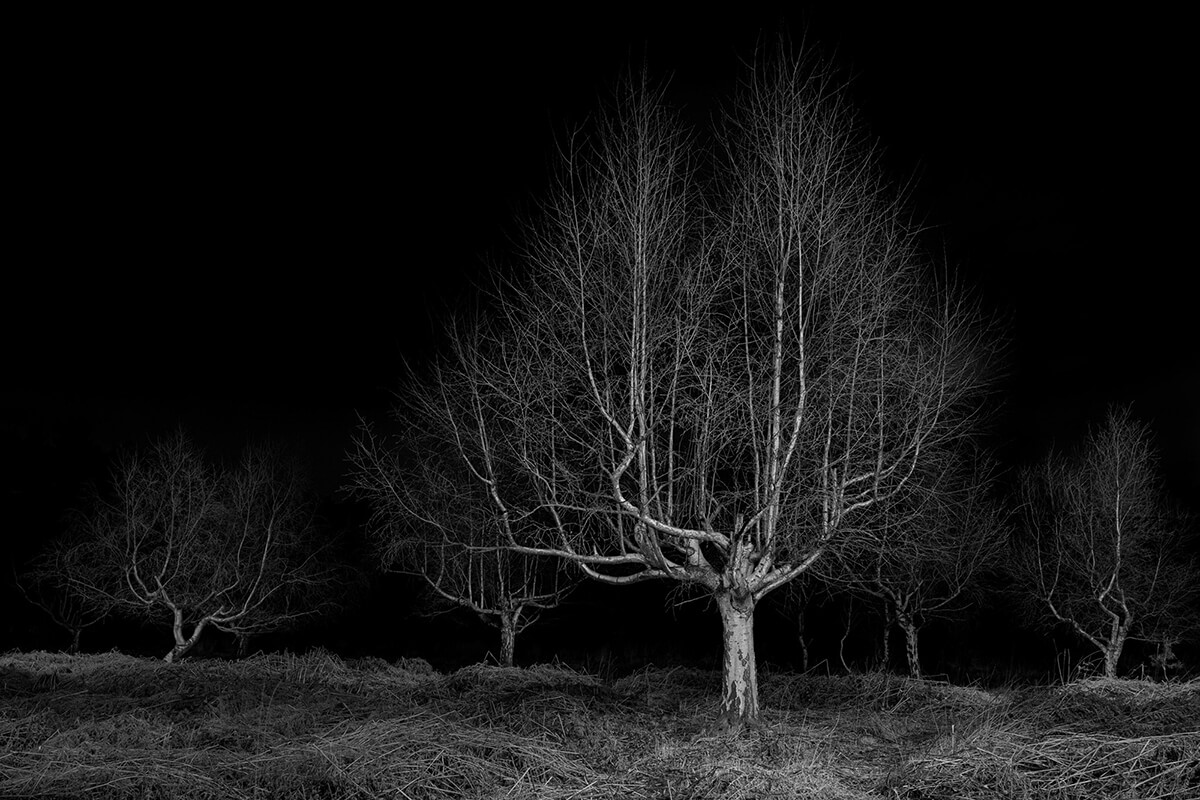INSPIRATION
My Favorite Shot
BLACK & WHITE
What’s the favorite photo you’ve taken?
Could you pick a favorite image you’ve taken? Not easy we know, but to coincide with our November 2022 BLACK & WHITE call for entries, we asked some of the photographers in our community to do just that. Or at least to pick a shot related to the topic that they hold dearly, were happy to have taken recently, has a great story behind it, or that resonates with them in some other way right now. Here they tell us why…
(Banner image: Jasper Goodall)
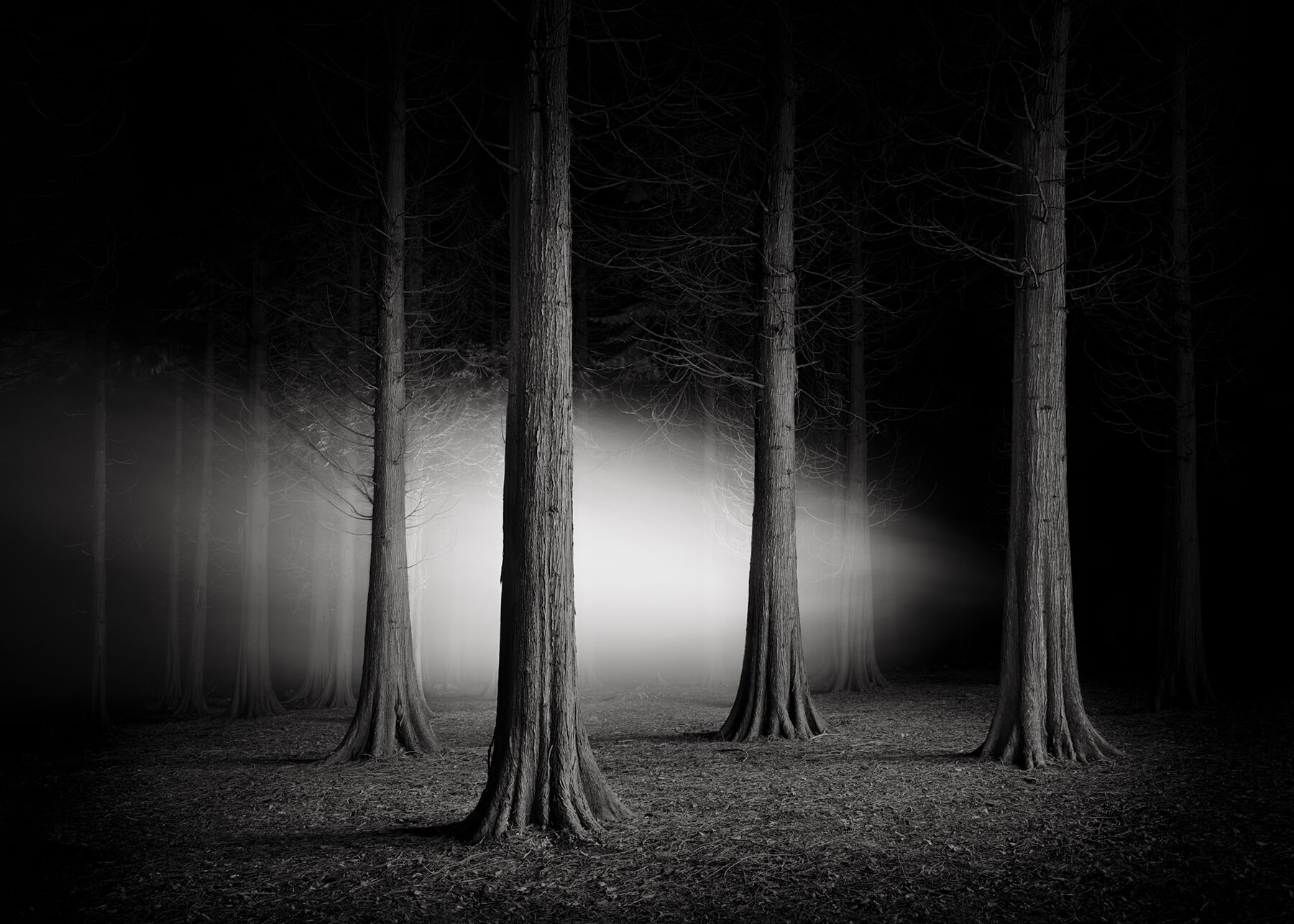
JASPER GOODALL
www.jaspergoodall.com / @jaspergoodall
“This image is from my series Into the Wild Night it is titled Augury. An augury is an omen, often emanating from the natural world. I was inspired by the historical Swedish folk tradition of Årsgång, or ‘omen walk’. It is traditionally performed on new years eve or the winter solstice. At midnight, after fasting for a day, one must walk alone into the woods with no light, traveling far enough that one cannot hear the crowing of a cockerel. Inside the woods one was said to encounter entities or manifestations that acted as omens for the coming year. It is said some returned having lost their sanity.
I often encounter mists manifesting as the night air rapidly cools and it is almost like they are an entity in themselves, creeping silently through the trees like spirits rising from the damp earth. I wanted to make an image that would visualise the phrase ‘an ill wind moved through the wood that night’. I enjoy the wildness of the imagination at night — when rationality takes a backseat role — and like to think that I am, in some way, documenting a dreamworld.
I now shoot almost exclusively in black & white for a number of reasons — I am very inspired by paraphotography. I love the Victorian images of seances, with strange, unexplained lights or fabric ‘ectoplasm’ purporting to be spirits of the dead. Equally I am inspired by the engravings of artists like Gustave Doré. I enjoy how he uses ethereal lighting to illuminate his subjects in the gloom of the afterlife in his illustrations for Dante’s Inferno. These influences, being historical, are of course black & white and I feel that shooting without colour brings a timelessness to the images. In addition, because I am almost exclusively a nocturnal photographer black & white suits the resulting imagery; at night colour is almost non existent as the moonlight washes it out and our eyes lose the ability to see colour, focussing on form instead. When one uses artificial light the structural forms of trees jump out in high definition, the images therefore become predominantly about form and contrast over colour.”
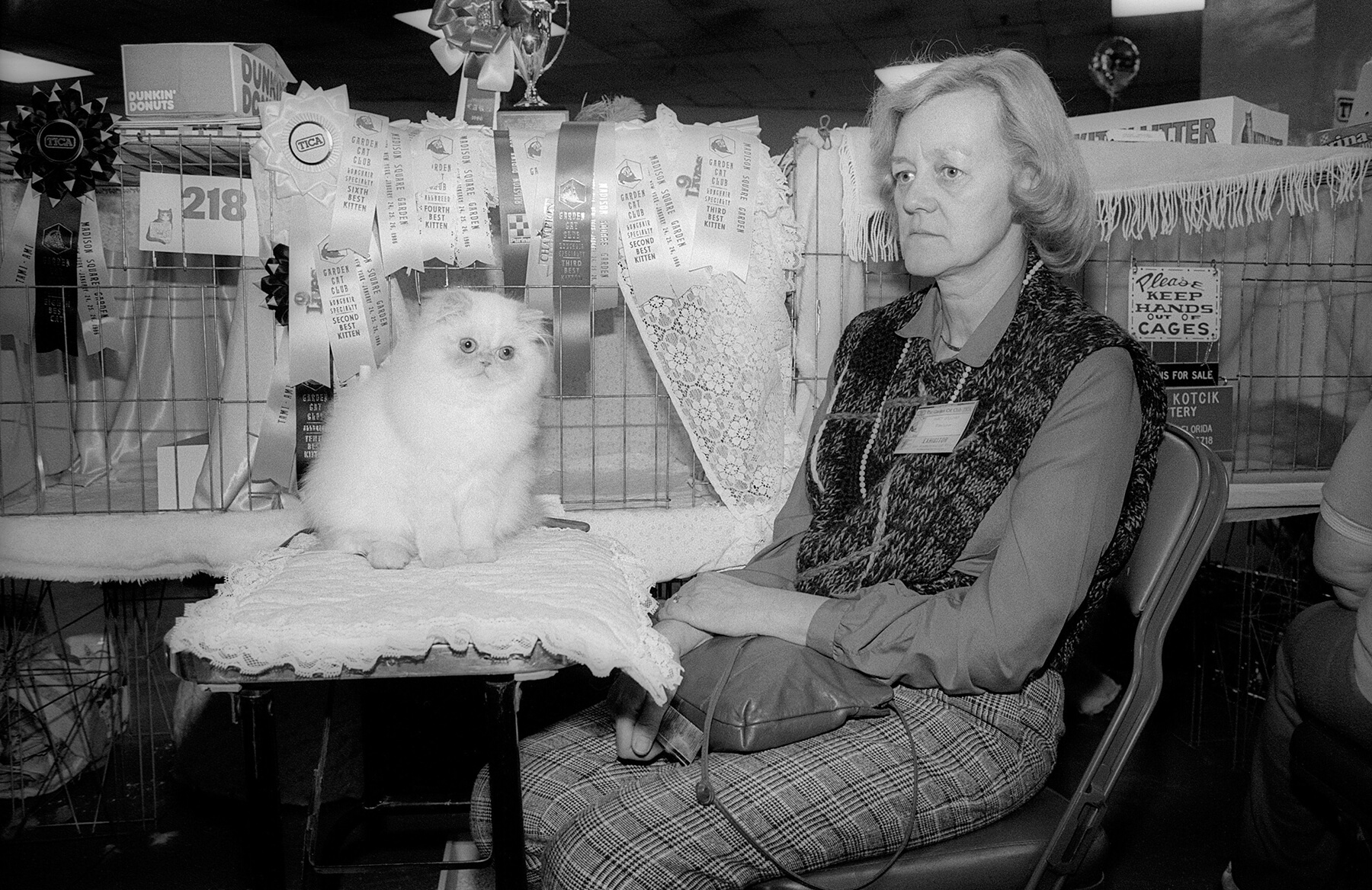
LESLIE FRATKIN
www.lesliefratkin.com / @leslie_fratkin
“I made this photograph at the International Cat Show in New York City. Owners had been training and grooming their cats all year long, hoping to take home the prestigious Best of Show and other important prizes. The tension was palpable as the many owners sat with their cats, waiting for the judges to come by.
When I saw this cat and its owner, I asked if I could make a few photos. Without a word, the lady gathered up her cat, pressed their heads together and smiled – exactly as she’d been requested to do countless times that day. I made a quick couple of photos, but I knew there was something more… Only seconds later, as if exhausted from the effort, the lady set her cat back down on its pillow and resumed waiting for the judges to arrive. It was as if she’d completely forgotten I was there. And that’s when I made this photograph.
I almost always use black & white film. Color photographs remind me of snapshots, no matter how moving their subject or story is. With black and white I feel a much stronger connection with my subjects and my surroundings. Whether viewing it or shooting it, color photography allows me to see, but black & white photography makes me feel.”
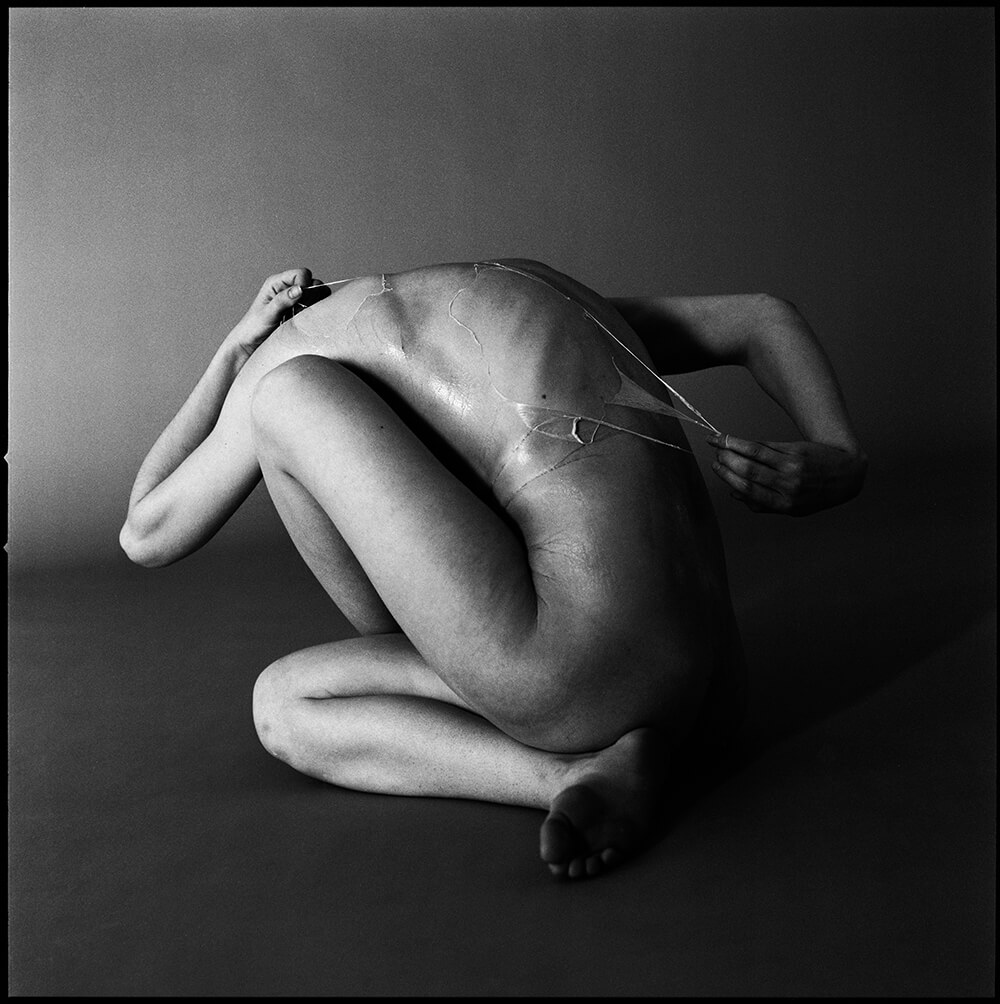
ANNA FÖRSTERLING
www.annafoersterling.com / @anna.foersterling
“This image is part of my series The Second Skin. I had the idea to do something with skin and wanted to represent a kind of liberation. I like the aspect that you can interpret it versatile and it also gets a gloomy ambience through the black and white. For the photo, I painted Nadya with liquid latex. After it dried, I asked her to slowly pull it off her body.
Black & white photography (especially on film) is a very powerful means of expression for me. I love minimalism and it allows me to reduce my images to the essentials. What remains is a clear, strong expression of emotion or design elements.”
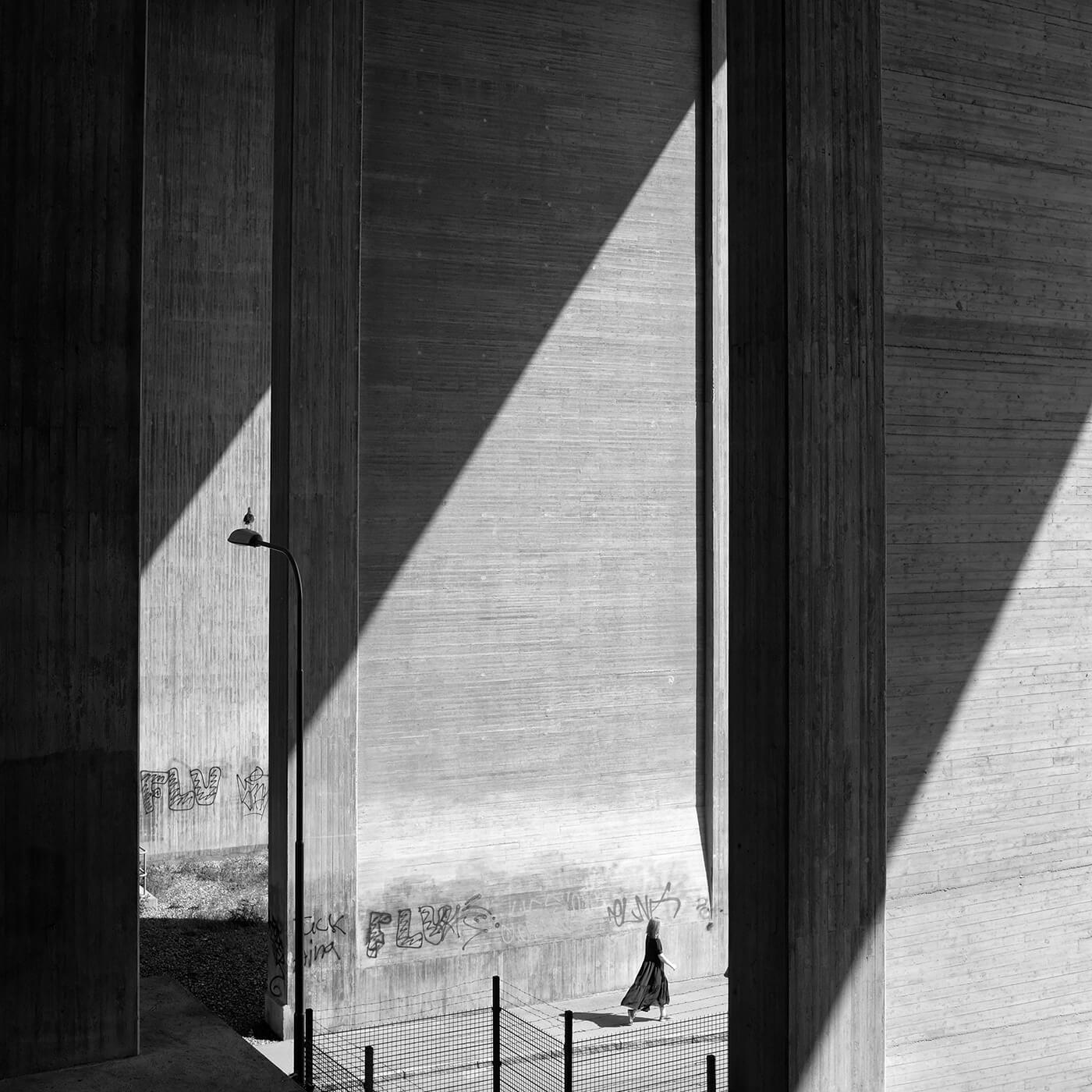
JONAS DAHLSTRÖM
www.dahlstroem.weebly.com / @joda317
“This image is titled 14:48:40, taken from a series of black & white street photographs in concrete environments which was eventually published in a book called 07:27:47. This image is probably the one that I like most from that series. It was taken at the foot of a bridge in Stockholm. I had actually planned to take it straight under the bridge to show all of the pillars, but the seagull, that is here sitting on a lamppost to the left in the image, did not approve of that idea, as it had babies residing right there. Consequently, I had to try and find another position. I climbed up a hill, composed the image in my camera and waited for someone to pass by. Finally, this lady appeared and I took the picture. What I like about it is how the shape of her dress aligns with the diagonal shadows, the scale of the construction – and the presence of the seagull, which I have to thank for forcing me to rethink and allowing me to capture this image.
It also serves as an example of why I like to shoot in black & white; I think that the absence of other colours tends to make any image more quiet, which makes it easier for the photographer as well as the viewer to focus on the elements of the composition.”
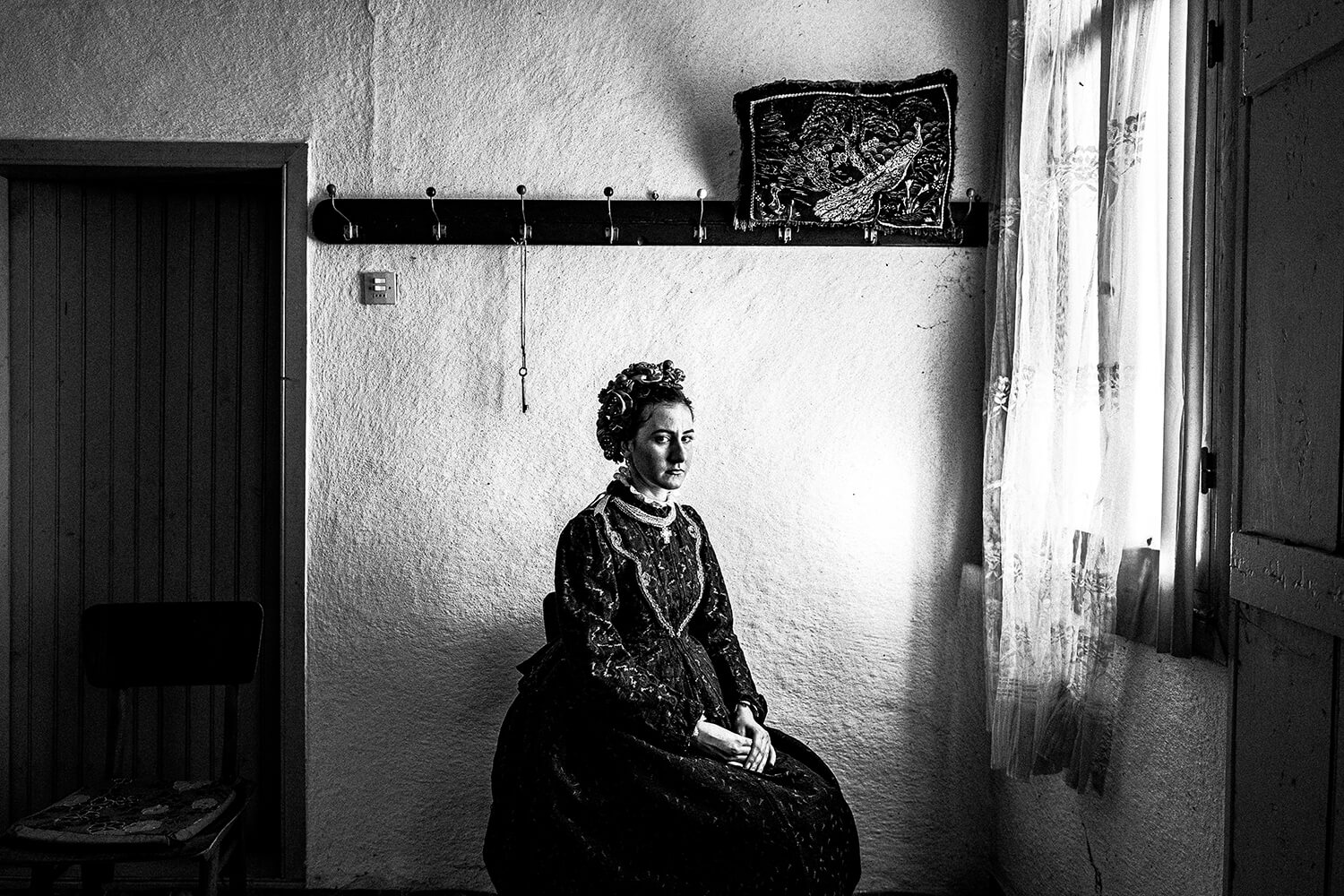
GEORGE TATAKIS
“It’s challenging for me anytime someone asks for my favourite image, as I am mostly intrigued by the process of photography, rather than the actual resulting photographs, so I usually go with: “my favourite image is the next one”. I have selected this one, which is not as well known as some other of my images, but I enjoy how everything came together in the composition. I can still remember the feeling I had at the moment of that click for achieving this composition. Furthermore, it is interesting because that was the last image I shot after a very long and tiring day. I thought I had finished for the day but then I saw this lady that came last and decided just to do something quickly. It ended up being the best photograph of the day.
I think that black & white photography promotes certain qualities that I consider a lot myself, such as forms (shapes) and geometry. Furthermore, it makes the viewer participate in the image, imagining the actual scene by adding the colours in their mind. The surrealism that black & white adds is another advantage. Last but not least, I feel very comfortable when shooting black & white. When I was studying drawing, I prefer doing charcoal drawings over coloured paintings. I am intrigued by the fact that you can describe so much by using just a single colour.”
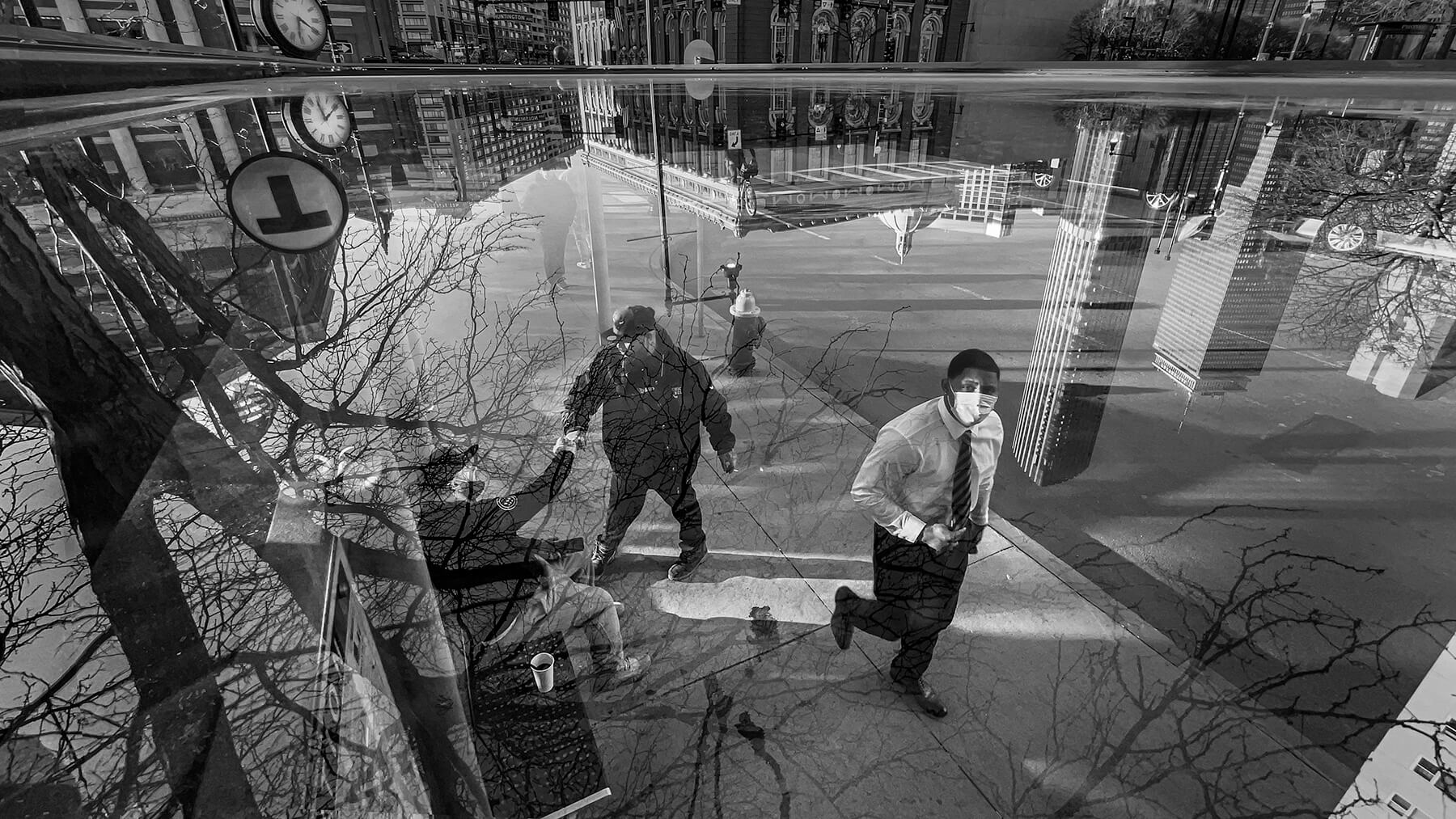
JEFF LARASON
www.jefflarason.com / @jeff_larason
“This image is an excellent example of the direction I’ve tried to take in my photography over the last few years. I’ve worked on adding complexity to my pictures while still maintaining a clear subject. For me, this image accomplishes that goal – it has a moment, a subject, light, and timing, and it also has layers of complexity for viewers who do more than glance at it. I spent months coming to this location, again and again, at all times of day, in different seasons, in all kinds of weather, waiting for the moment. This image is part of a larger project, The Mass Ave Project, documenting a street that runs through Boston and Cambridge, through wealthy and derelict neighborhoods.
The vast majority of my work is in black & white. I don’t see or look for color when I’m out. I look for shape, geometry, light, and composition. It’s just how I’ve learned photography since my early days of shooting film and developing images in the darkroom.”
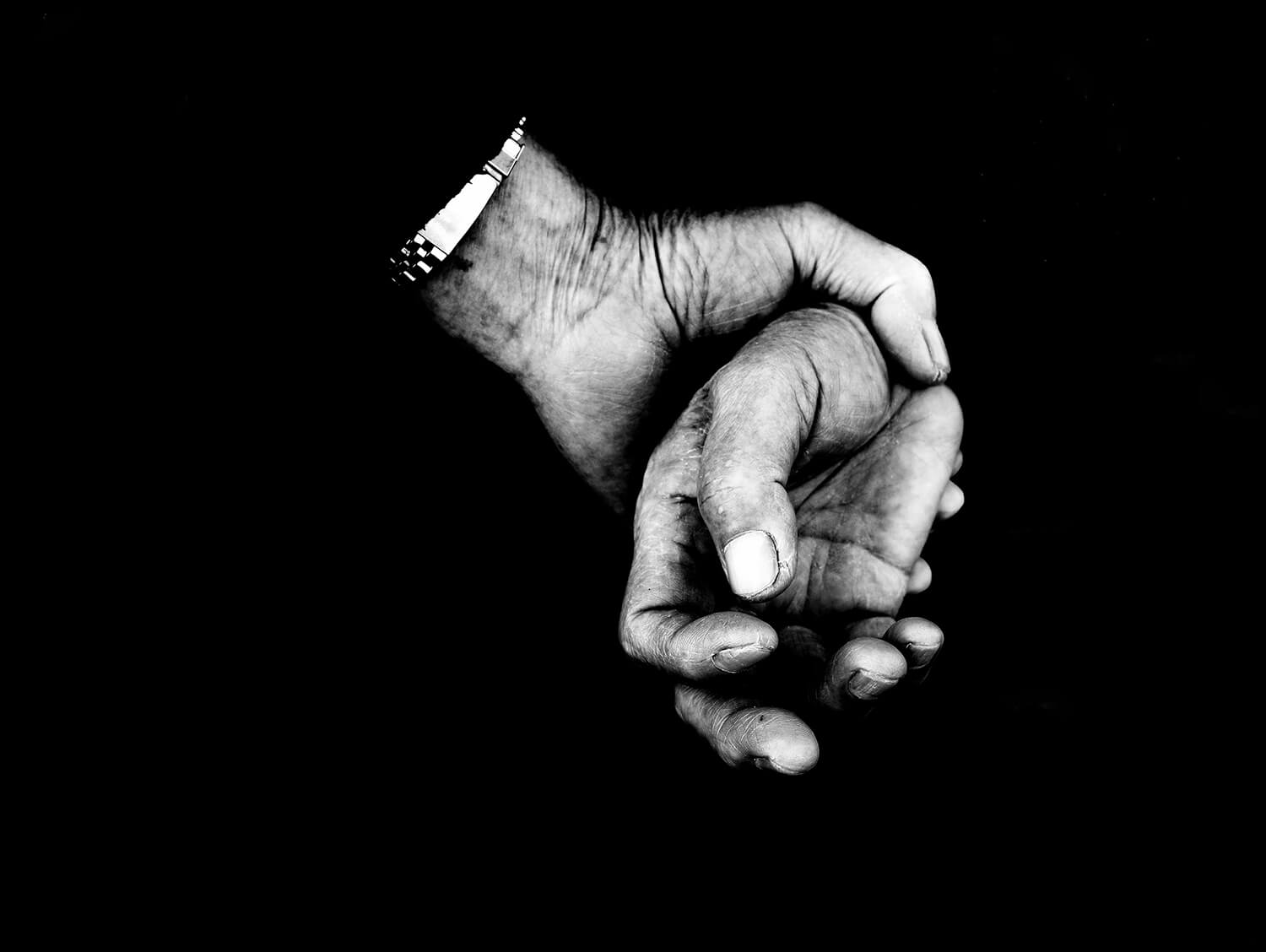
JERALD RIVERA
“This is my favorite shot because it represents the day I found out about the smaller details in street photography, giving me a new perspective to search for when out in the streets. I shoot in Black and White because we see the world in color everyday and i like the challenge to see it in a different way.”
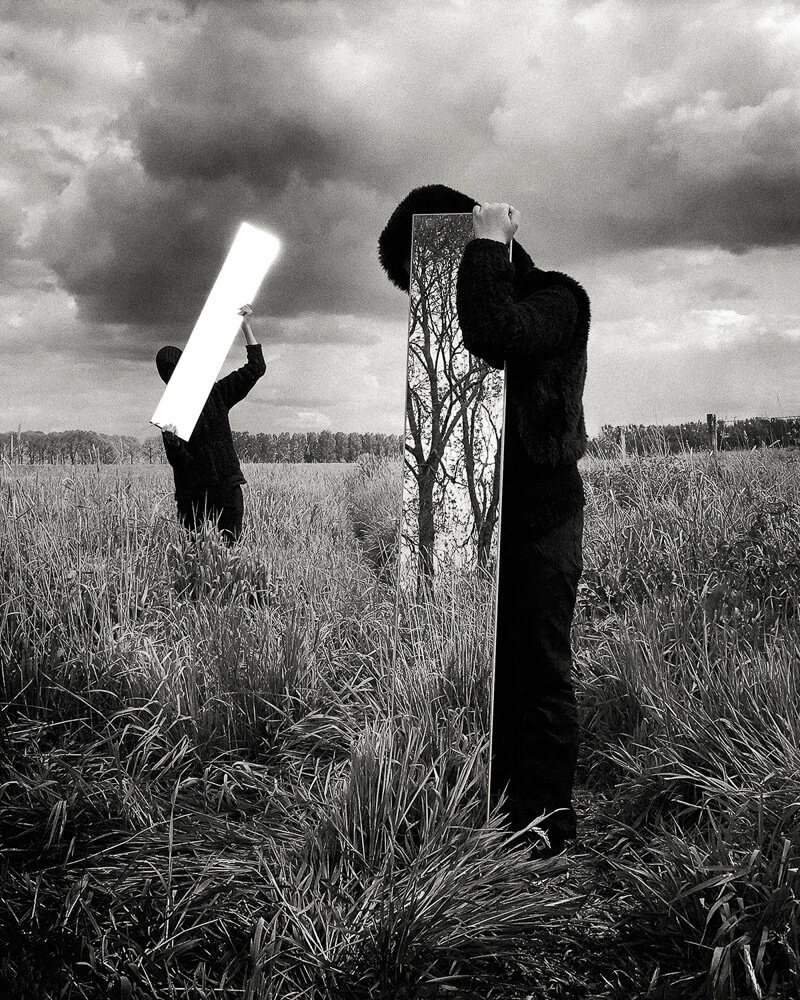
WIESJE PEELS
www.wiesjepeels.com / @wiesjepeels
“The figures depicted in this picture are my son Lytse and daughter Trijntje. They helped me realize the image I had in my head. They often go on the road with me, if I have an assignment or to take pictures together. We work together under the name NEST. It’s an intergenerational ‘working name’ for our family. We work together and have conversations within making work and the associated creative processes and taking on assignments. For me it is important to explain this regarding the intergenerational aspect. I wish my children, as well as other young adults, the opportunity to learn in practice from home. As in the past the apprentice/master principle was very normal. This in addition to the education offered. I take Trijntje’s and Lytse’s input seriously and believe very much in the added value of looking at the world from different age stages and ‘growing conditions’ and reflecting on that in work. We take all kinds of props that we collect along the way. Sometimes we borrow or get props from people we meet while making work. We also often visit second-hand shops. We found these mirrors in a container. It was next to a house they were renovating nearby. The mirrors inspired me to create this image.
For the photo series ‘Fluxum’ (meaning ‘flow’ in Latin) I was commissioned to produce eight striking ‘photo towers’ scattered in the landscape over an area of 50km in the Netherlands show special stories about idyllic places along the river Maas. Visitors were invited to look at the area with different eyes, this is reinforced by choosing black & white. You look at the landscape with your own eyes in color. The photographs exhibited in the landscape on physical towers were printed in black and white. I went to work as ‘a viewer’ and “intervened” in the landscape by depicting anecdotes from the area with fictional characters figuring in a situation I made up myself. The staged photographs, like this one, are about reflection, literally and figuratively. The black figures are not ‘people’ but part of the stacked image. They serve the function of form and hue.
Black & white to me means capturing truth not reality. You get to the heart of what is depicted.”
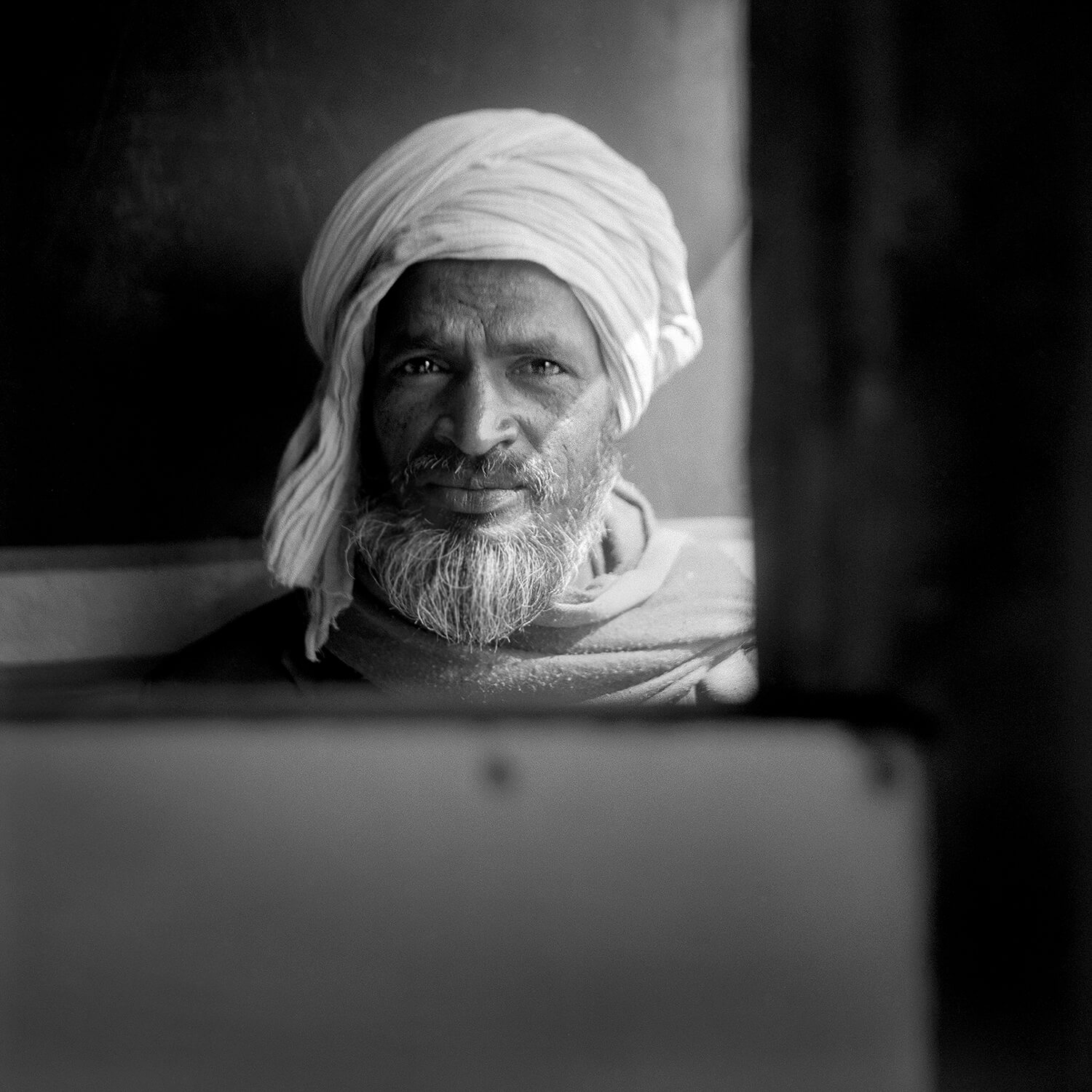
BETINA VANG
www.betinavang.com / @betinavangphoto
“This picture is from a brief encounter I had on a train at Varanasi Junction railway station, we did not speak but yet a connection was made that felt deep and meaningful. It was a beautiful moment. I love photographing in both color and in black & white. But there is something magical about black & white photography. You have to be even more conscious of the way you work with the light and composition, because it expresses the essence of photography in a way.”
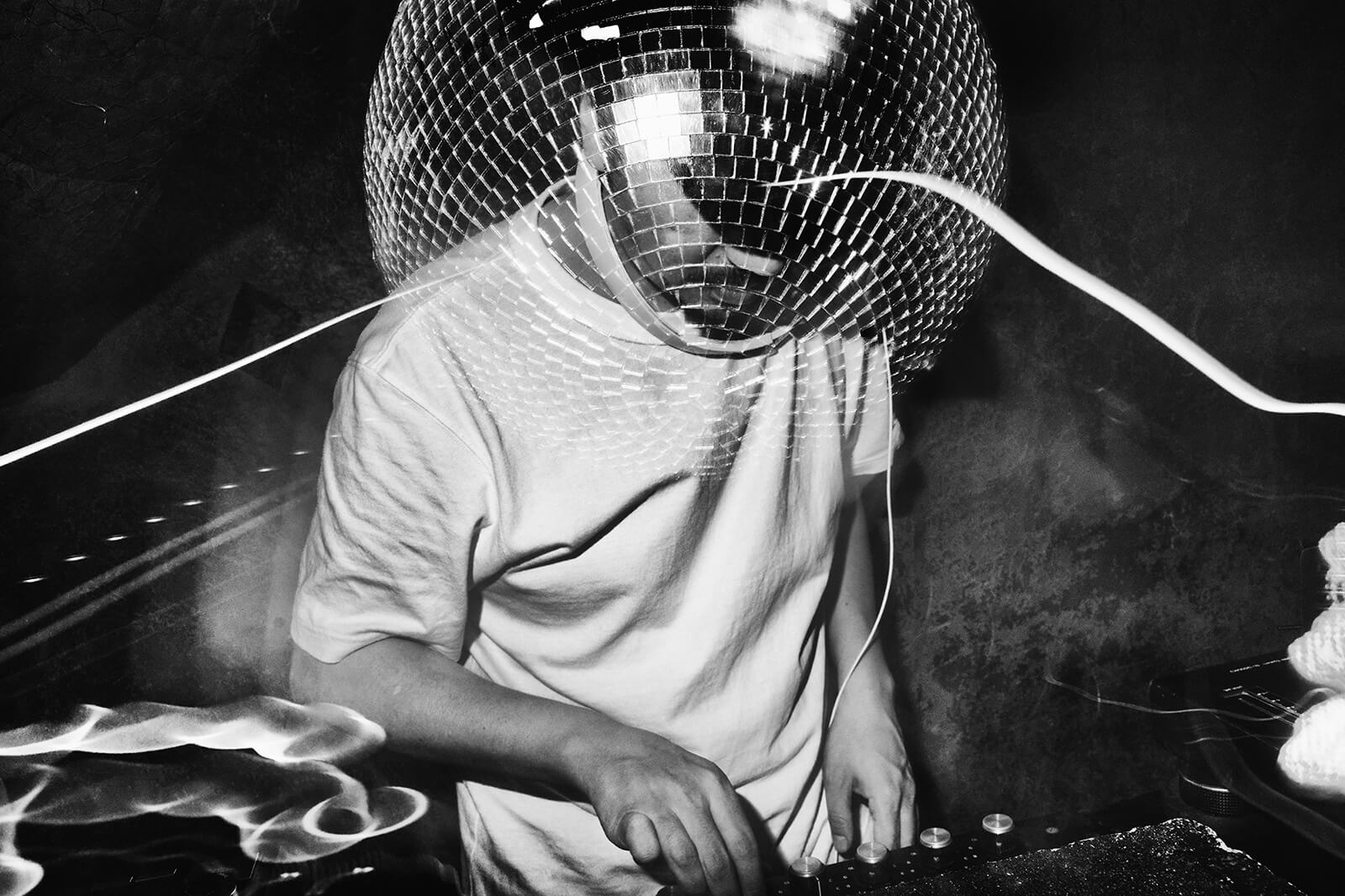
ARGUS PAUL ESTABROOK
www.arguspaul.com / @arguspaul
“I shot this photograph one night while I was in Tokyo, Japan. Lost in the city, I was looking for a place to get a drink and forget about life for a little while. I entered a bar and ordered a beer. While I was drinking, I heard music coming from the next room. It was a tiny, empty dark space with a DJ spinning records for a non-existent crowd. There was only a lone mirrorball spinning alone in the darkness. But even with no one else there, the DJ was flowing and playing as if he was at Coachella.
Quickly realizing the photographic opportunity in this situation, I decided to make an extremely long exposure to interpret the scene I was witnessing. First, I focused on the mirrorball and hit it with my flash. Then I spun around, aimed the camera at the DJ, and triggered my flash again. This double exposure effect was necessary because I wanted the mirrorball to represent his artistic spirit – a kind of musical aura I sensed that surrounded him. It took me about 5 attempts and I decided this was my favorite version because the light streaks from the mirrorball reminded me a little bit of the light rays from the famous Pink Floyd prism. For moments like these, I find shooting in black & white allows me to tap into a creative mode of thinking where I can lean heavily into abstraction to portray the energy I feel.”
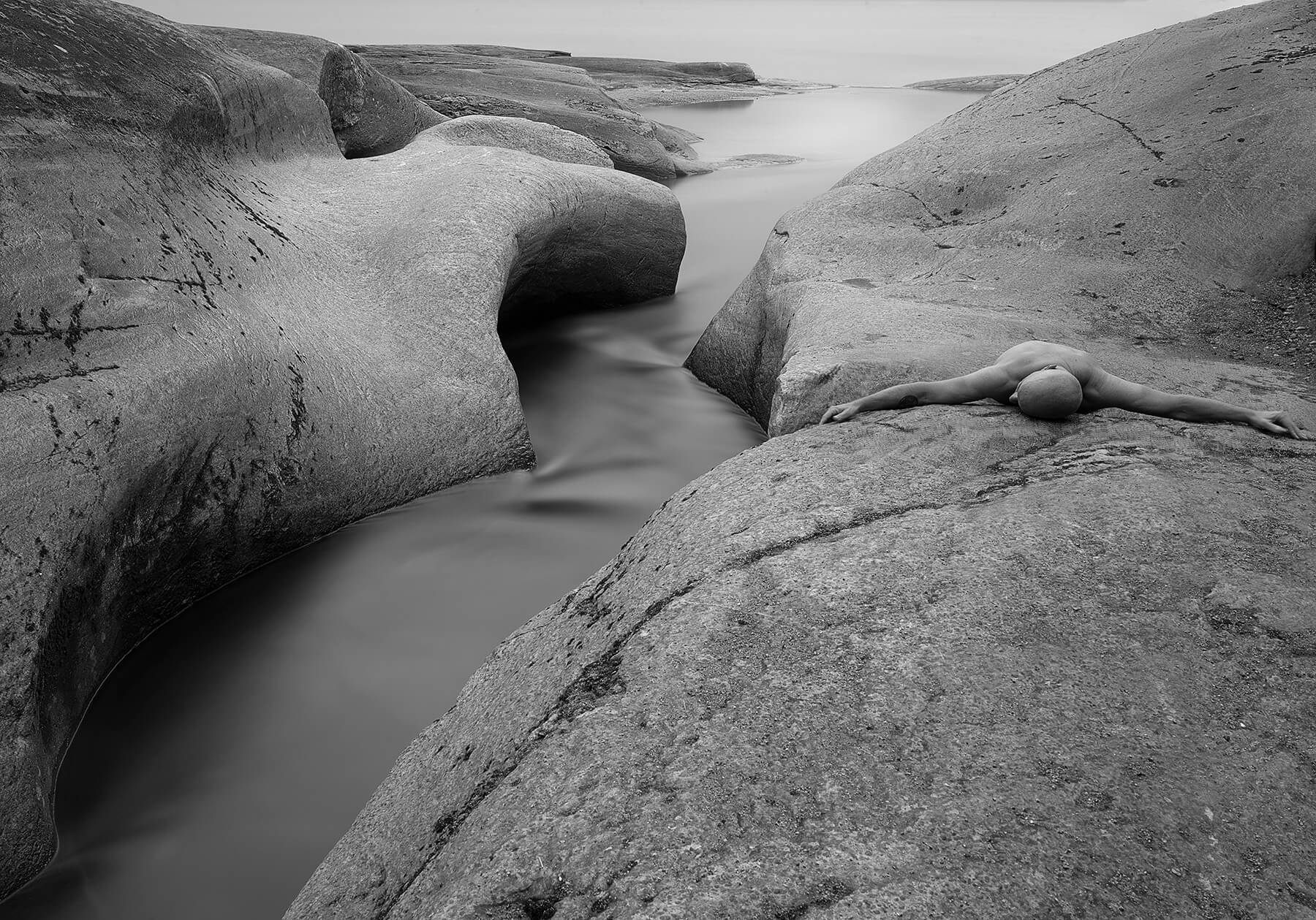
KETIL BORN
“For me, black & white is close to drawing, all about light and shadow. Here I was working with a different form when it all fell into place. The body just melted into the curves of the landscape and found a peace with Mother Earth. I am really happy about it.”
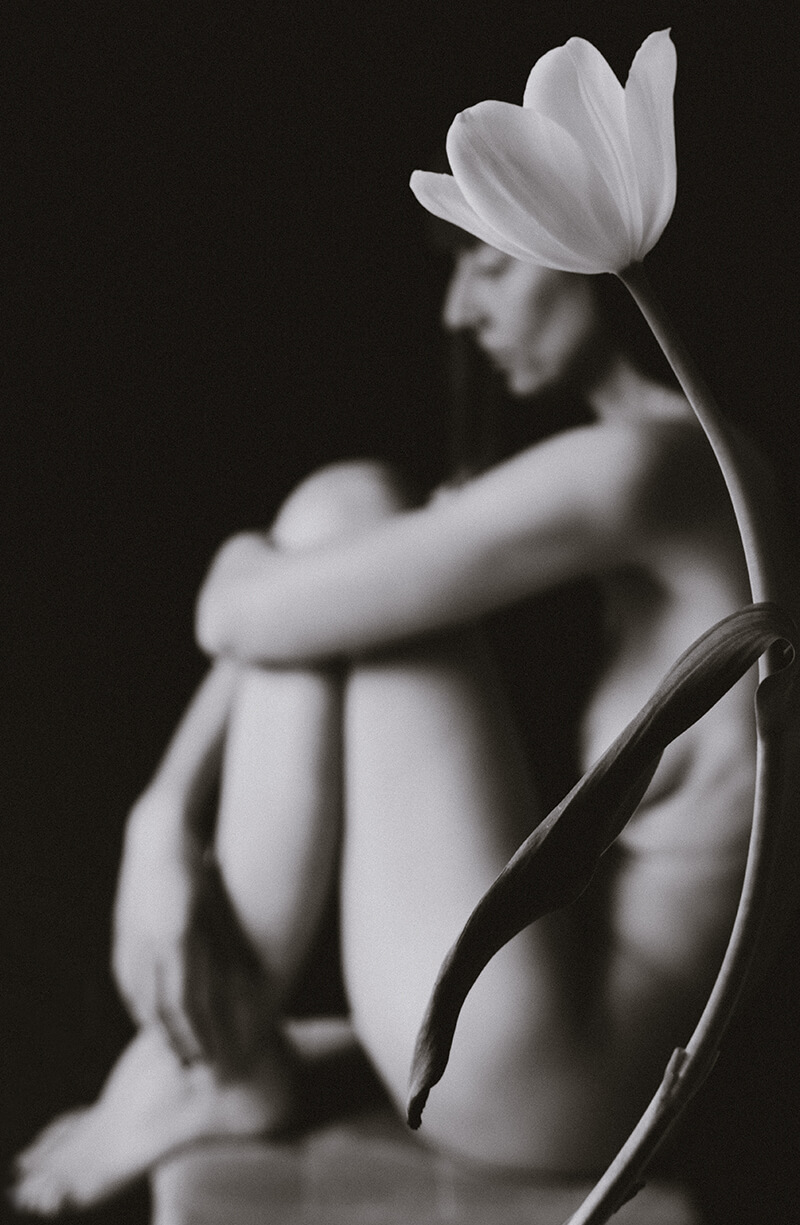
KINGA ZGIRSKA
www.king-plus-a.com / @like_a_king__plus_a
“Of all the photos I’ve taken so far, this one is my favorite images. It is for me a beautiful metaphor for female strength and blooming. This topic is extremely close to my heart. As a woman myself, I went through many phases until I finally realized that the strength that lies within us has no equal. Despite delicate stature, a woman is able to endure so much. For those she loves. For her hidden desires…
It seems to me that in black & white photography, the viewer’s attention is mainly focused on the message. That’s why I often choose monochrome film. To focus on the essence, light and deep contrasts, of which I am a huge fan.”
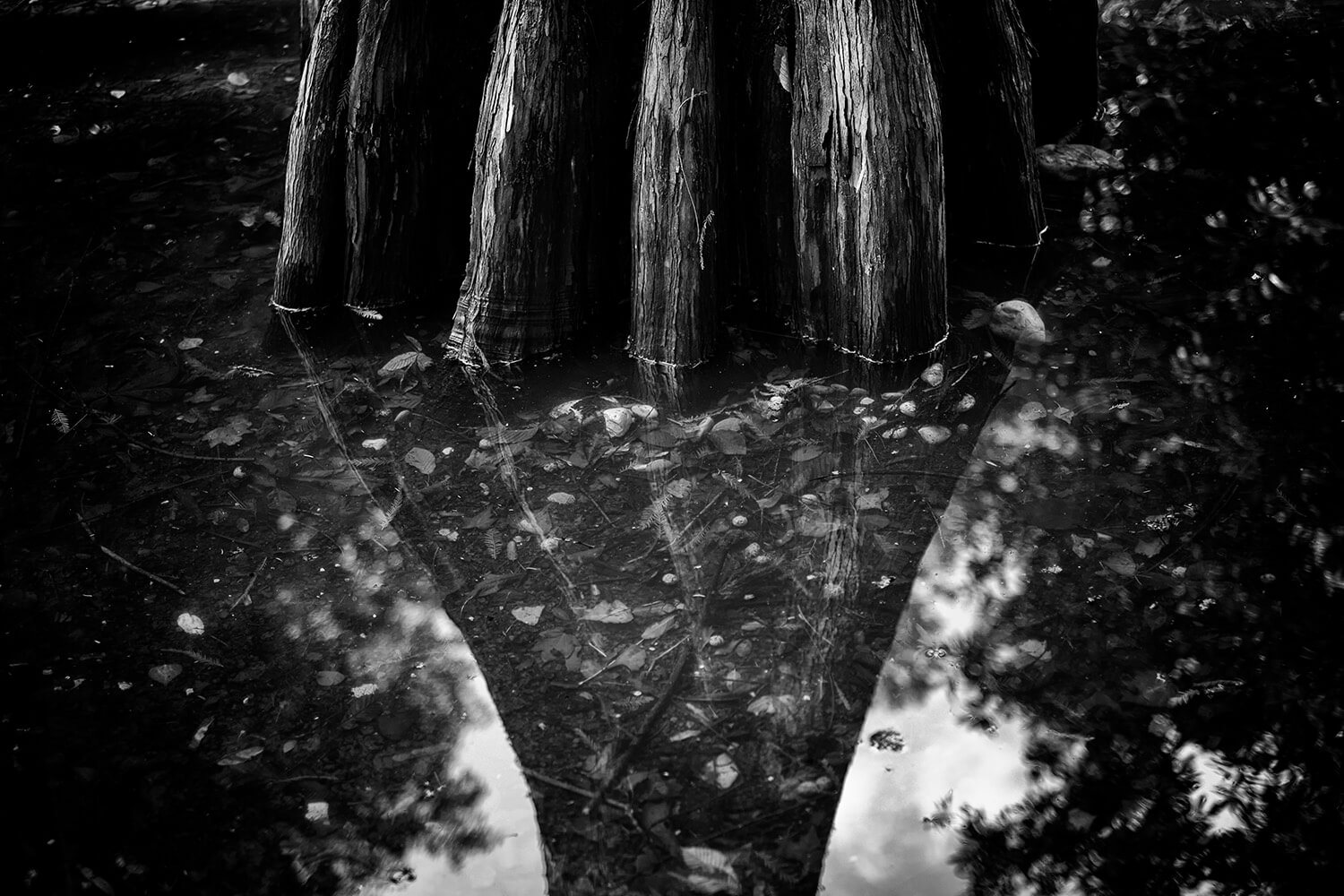
CATHERINE MARCOGLIESE
www.marcogliese.org / @cathymarc0
“Submersion. Arboreal Reflections, 2016 -2019. Water is an essential element of the forest eco-system. The reflective surfaces of forest ponds offer a visual opportunity to play with the photographic image in order to express the magic and mystery inherent in the forest environment: lush foliage is multiplied, trunks and branches are elongated, and the reflected light bounces off surfaces to create a cosmos within a terrestrial paradise.
In general, I use black & white either when I want to accentuate the drama inherent in an image, or when I want to step back from the sense of reality in a color image – in other words, to leave more to the imagination of the viewer and to take them to a place other than that of their immediate experience. This sense of other-worldliness is essential to my series, Arboreal Reflections, in order to convey the feeling of mystery and magic in the forest environment.”
